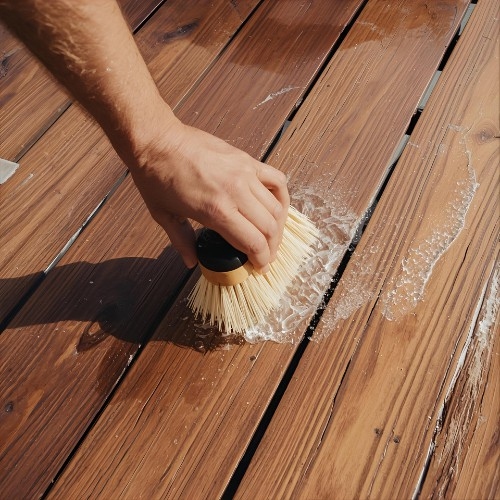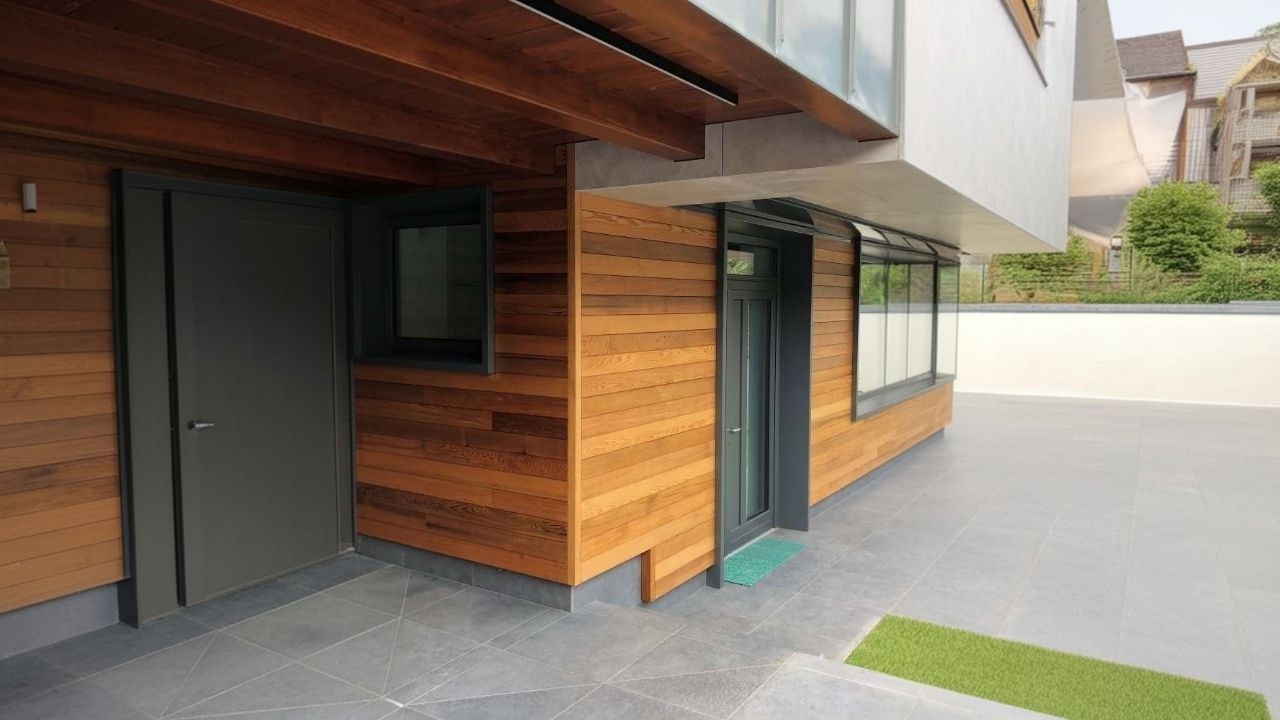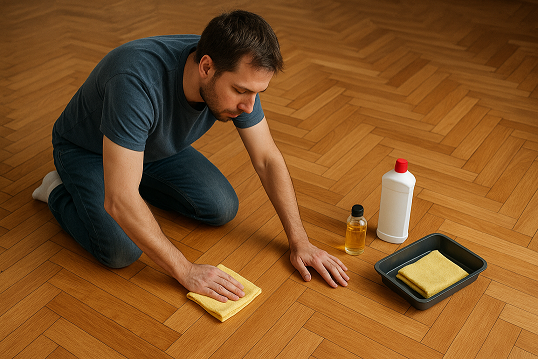Parquet and industrial parquet – technical analysis, differences, similarities and areas of application
September 10, 2025
Parquet has been a preferred flooring choice for residential and commercial spaces for centuries. Among the various types, there are two main categories that are often compared: traditional parquet (solid and multi-layer parquet) and industrial parquet (vertical slatted parquet). Although both are made of wood and fulfill similar basic functions, they differ significantly in their construction, technical properties, appearance, and areas of application.
Structure and design principle
- Solid parquet: consists of a single piece of wood, usually 14–22 mm thick.
- Multi-layer parquet: has a wear layer made of fine wood (2.5–6 mm) that sits on a core layer of cross-laminated wood or HDF. The layered construction ensures dimensional stability.
- Installation types: herringbone, cube, long-strip, plank parquet, and many more.
Industrial parquet (vertical slatted parquet)
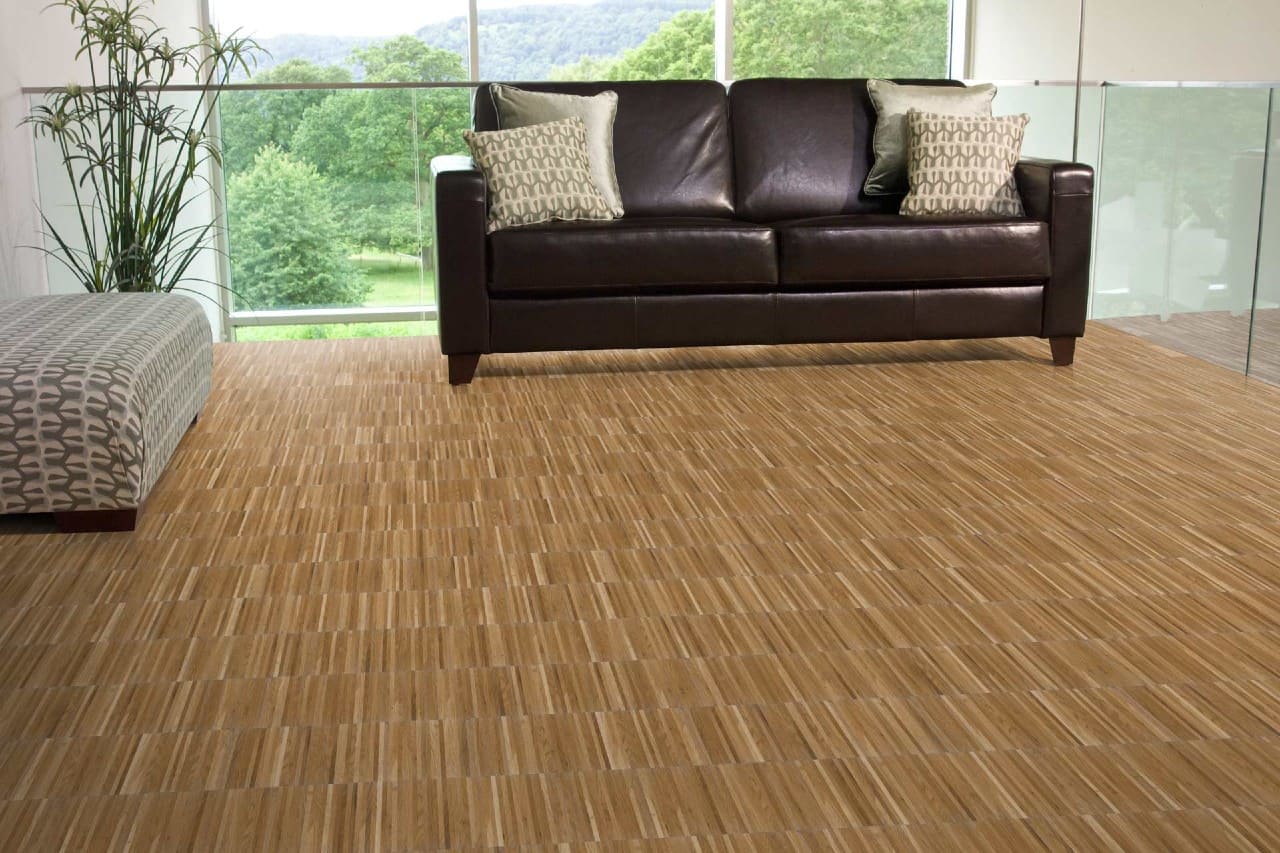
- Consists of narrow wooden slats (8–10 mm wide, 160–300 mm long, 8–23 mm high) that are placed vertically and glued together to form panels/mosaics.
- The vertical orientation ensures an exceptionally thick wear layer (up to 20 mm).
- Originally developed as a technical floor for industrial and factory halls.
Acoustics
- Parquet: pleasantly warm, comfortable underfoot, with good impact sound insulation.
- Industrial parquet: harder underfoot, acoustically louder, less comfortable.
Thermal conductivity
- Parquet: Multi-layer parquet is very compatible with underfloor heating.
- Industrial parquet: suitable, but less heat-emitting due to its thickness.
Service life
- Parquet: 20–40 years, depending on care and the thickness of the wear layer.
- Industrial parquet: 40–80 years, especially in high-traffic areas.
Visual Differences
Classic Parquet:
- Wide design variety.
- Elegant, decorative appearance.
- Ideal for prestigious rooms.
Industrial Parquet:
- Technically functional look with narrow, vertical slats.
- Visually more restless, yet modern and industrial.
- Popular in lofts, studios, or minimalist designs.
Installation and Care
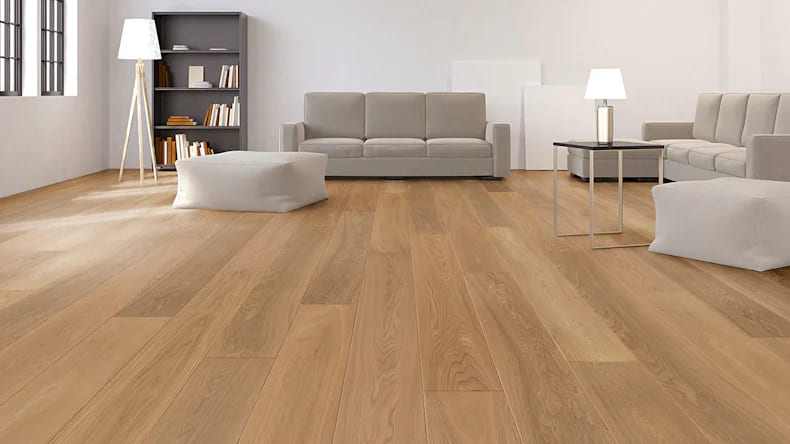
Parquet:
- Can be fully glued or installed floating.
- Surface often factory-finished (oiled or varnished).
- Easy to maintain, can be renovated if necessary.
Industrial parquet:
- Must be fully glued.
- Requires sanding and sealing several times after installation.
- Requires high maintenance in the initial phase, but extremely durable.
Similarities
- Both are made of real wood → natural look and tactile warmth.
- Both can be renovated several times (sanding and resealing).
- Both contribute to regulating humidity (hygroscopic effect).
Differences at a glance
| Criterion | Parquet (Solid/Multi-Layer) | Industrial Parquet (Upright Slats) |
|---|---|---|
| Construction | Solid or layered construction | Upright slats |
| Wear layer | 2.5–6 mm (Multi-layer), 14–22 mm (Solid) | up to 20 mm |
| Load capacity | high, depending on the wood species | extremely high |
| Service life | 20–40 Years | 40–80 years |
| Appearance | Elegant, diverse patterns | Functional, technical |
| Areas of application | Living rooms, offices, hotels | Industrial halls, schools, sports halls |
| Installation | Glued or floating | Glued only |
Recommendations for Use
- Living rooms, hotels, offices: classic parquet – due to the wide variety of designs, homely atmosphere, and pleasant feel.
- Public buildings, schools, sports halls, production facilities: industrial parquet – due to its enormous durability and long service life.
- Lofts or modern minimalist interiors: industrial parquet can be used as a deliberate design accent.
FAQ – Frequently Asked Questions
1. Which is more durable – parquet or industrial parquet?
Industrial parquet is more durable because it has a thicker wear layer and can be renovated much more frequently.
2. Is industrial parquet also suitable for living spaces?
Yes, especially in modern interiors or lofts. Visually, however, it appears more technical and less "cozy" than traditional parquet.
3. Can parquet be installed over underfloor heating?
Yes, especially multi-layer parquet is very suitable. Industrial parquet also works, but reacts more slowly.
4. Which parquet is easier to maintain?
Traditional parquet, especially if it is delivered factory-treated. Industrial parquet requires more intensive surface treatment in the initial phase.
5. Where is industrial parquet most commonly used?
In schools, sports halls, workshops, production and warehouse facilities, as well as in heavily frequented public areas.
Parquet and industrial parquet are technically closely related, but meet different requirements. Those who value aesthetics and living comfort should choose traditional parquet. For maximum resilience and durability – especially in heavily used rooms – industrial parquet is the better choice.


